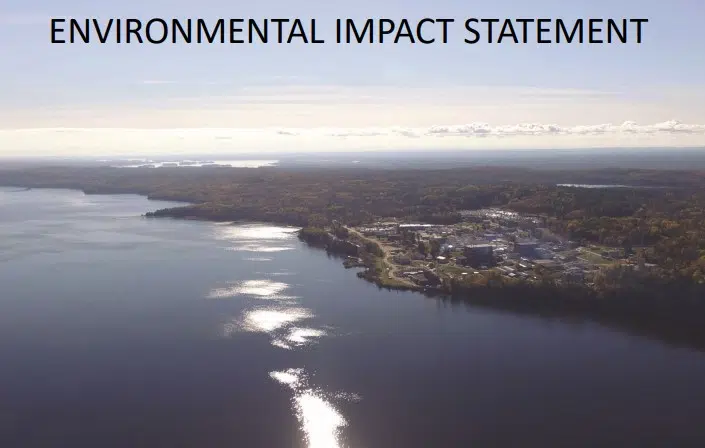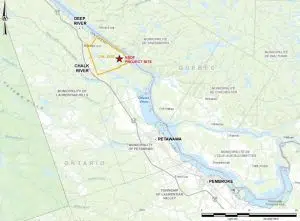
Canadian Nuclear Laboratories (CNL) has submitted a revised draft of the environmental impact statement for the proposed Near Surface Disposal Facility (NSDF). Manager of Regulatory Approval for NSDF, Sandra Faught, says some of the main changes include the site only holding low-level radioactive waste instead of some intermediate radioactive waste that was previously proposed. The site would hold up to a million cubic meters of low-level radioactive waste made up of mostly contaminated soil, demolition debris, clothing and protective materials.
The environmental impact statement from CNL says the NSDF site is located 50 meters above the Ottawa River and there’s a natural bedrock ridge to force water away from the river. Faught says protecting the environment is a priority.
The Manager of Regulatory Approval for NSDF says the disposal facility would be able to withstand major weather events such as earthquakes, tornadoes, significant rain and flooding.
Roughly 90% of the waste stored at the NSDF will be from the Chalk River Labs site and the rest would be coming from other AECL owned sites. Faught says this would save transferring the low-level nuclear waste to another facility which could take 45,000 transport truck trips.
Faught says pending approval from the Canadian Nuclear Safety Commision, construction is expected to start in 2021 with operation beginning in 2024. Operation will continue for 50-years with a 30-year closure phase. Faught says the NSDF will have a 550 year design life, but is expected to last much longer. She adds the low level nuclear waste will only require a hundred years to safely decay and return to normal environmental conditions. As a part of the post closure phase, staff will continue to inspect the land and assess environmental impacts.
Meanwhile, the people who oppose the NSDF don’t appear comforted by the changes to the environmental assessment. Joanna Echlin from the Old Fort William Cottagers Association says civil society groups remain staunchly opposed to the project, and say that no amount of tweaking by Canadian Nuclear Laboratories can make the proposed projects meet international safety standards. A scientist and researcher for the group Concerned Citizens of Renfrew County and area says the mound and the tomb are the wrong strategies and simply can’t do the job of keeping radioactive toxins out of the air and drinking water.
Read the 26 page executive summary of the revised environmental impact statement for the NSDF here.
Proposed location for the Near Surface Disposal Facility project.
